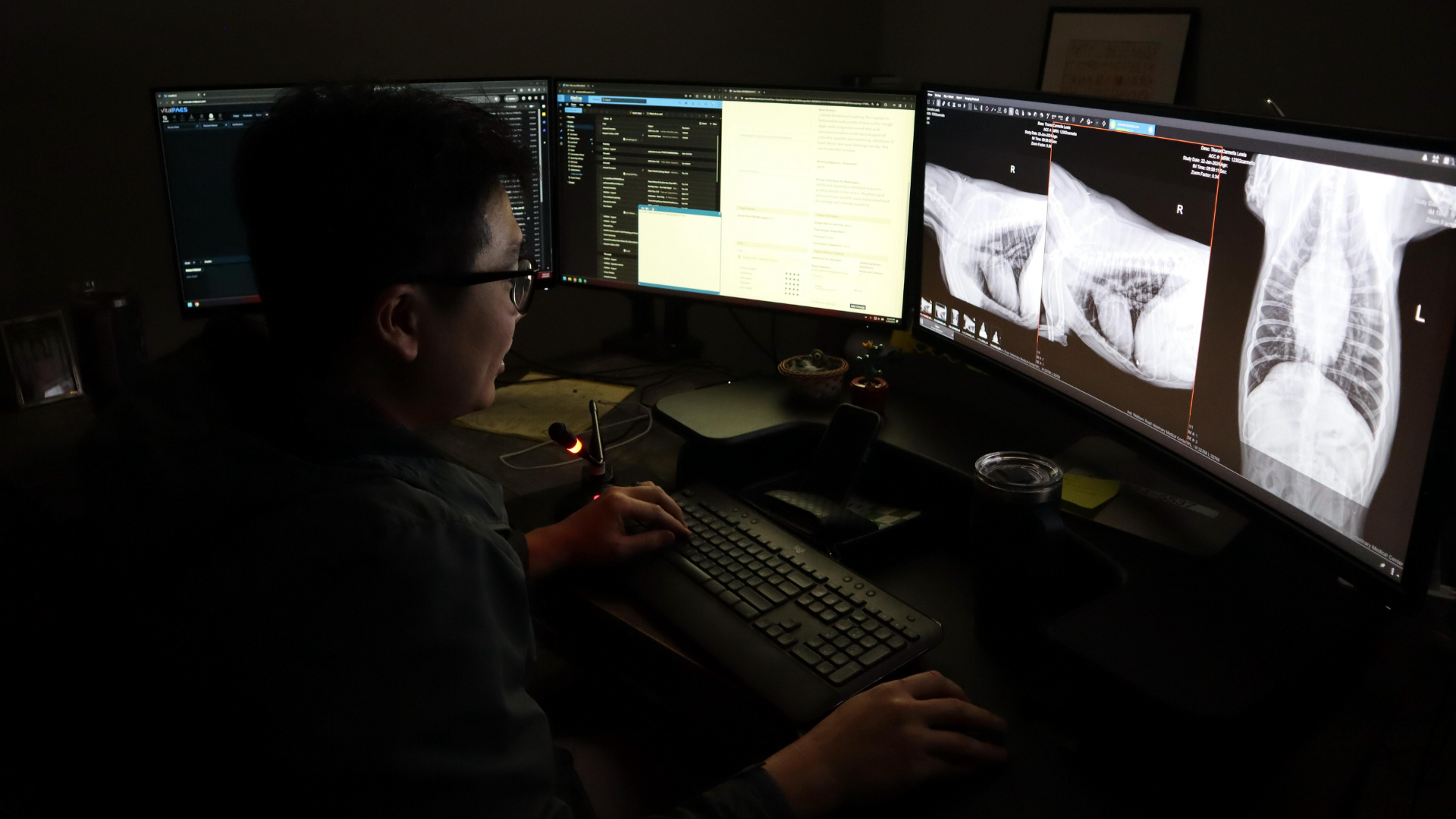Veterinarians are busy people. Most of us work in practices that are non-stop, balls-to-the-wall, go, go, go, situations. Always someone pulling you in 7 different directions. There is just not enough time in the day and sometimes this can lead to mistakes and diminishes the quality of medicine one can deliver. It is certainly true that you cannot be everything to everybody and you can also not be an expert in every facet of veterinary medicine. It is just not possible, and it is OK to admit that! Clients actually respect you for realizing this and when needed, reaching out or delegating for help is appreciated. Using the benefits of teleradiology and telemedicine and employing a specialist is a great example of this “virtual” help.
I always thought that one of the differences in how we are taught in veterinary school as compared to medical students is the sheer volume of information that we are expected to learn and retain. As we all know, human doctors only have to worry about one species of animal (other humans) while us veterinarians have to worry about all of the rest of the species of animals. How can you know everything about them all? Is it possible? Do you remember everything in every lecture from veterinary school? Of course not. Very few of us read our own cytology or if you do, you still send the slides out for a pathologist to look at. Even fewer of us read histology of biopsy samples. Yet we all attended lectures in veterinary school showing us endless pictures of cells and tissues on slides (ok, it seemed endless to me!). We now realize, despite this introductory exposure to cytology and histopathology, our knowledge is limited and that we are NOT experts in these areas.
Radiology and imaging are no different. Most of us had a radiology class in veterinary school that covered radiographs only including large and small animals. A few of us were lucky in that we may have had some very limited exposure to ultrasound while in veterinary school. Probably none of us were really exposed to CT, MRI or nuclear medicine. Yet, some practitioners still feel reluctant to send out their images to be read by a boarded radiologist. Those that do send out their images for interpretation now realize that it is extremely beneficial for the practice, owner and animal and that teleradiology will elevate the overall quality of their practice. Owners realize that this happens routinely in human medicine and most welcome this level of service in veterinary medicine; they are surprised how inexpensive it is in veterinary medicine compared to human medicine AND that you get your results back within 24 hours for their pet but it may take a week or longer to get results back on yourself!
Teleradiology IS the standard of care and is noted as such by the American Animal Hospital Association (AAHA). In most urban environments, there often seems to be a small animal practice on every other corner. Are your competitors using teleradiology to its fullest advantage? Are you?

